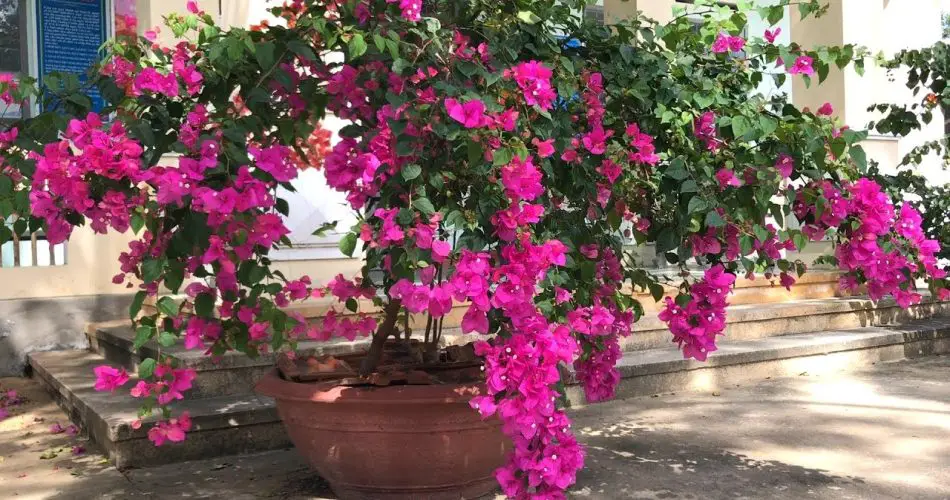Bougainvillea is renowned for its vivid, colorful blooms and vigorous growth, making it a popular choice for adding exotic charm to gardens and landscapes. If you want your bougainvillea to produce an abundance of flowers, follow these key strategies to ensure your plant thrives and blooms spectacularly.

1. Understanding Bougainvillea’s Blooming Needs
Bougainvillea requires specific conditions to bloom profusely:
- Sunlight: Bougainvillea needs full sunlight to produce its bright blooms. Aim for at least 6 hours of direct sunlight daily.
- Temperature: These plants thrive in warm climates and can tolerate heat. Ensure temperatures are consistently above 50°F (10°C).
- Soil: Well-drained soil is crucial. Bougainvillea prefers sandy or loamy soil with a pH between 5.5 and 6.0.
2. Proper Planting Techniques
A. Choosing the Right Location
- Sun Exposure: Plant bougainvillea in a sunny spot where it will receive ample direct sunlight.
- Spacing: Allow sufficient space around the plant to accommodate its vining growth. Ensure good air circulation to reduce the risk of disease.
B. Soil Preparation
- Drainage: Improve soil drainage by mixing in sand or perlite if needed. Avoid heavy, clayey soils that retain excess moisture.
- Fertilization: Incorporate a balanced fertilizer into the soil before planting. Bougainvillea benefits from a low-nitrogen fertilizer that promotes blooming over foliage growth.
3. Watering and Fertilization
A. Watering
- Frequency: Water bougainvillea moderately. Allow the soil to dry out between waterings. Overwatering can lead to root rot and hinder blooming.
- Techniques: Water at the base of the plant to avoid wetting the leaves, which can promote fungal infections.
B. Fertilizing
- Timing: Feed bougainvillea with a high-phosphorus fertilizer during the growing season to encourage flowering. Apply fertilizer every 4-6 weeks.
- Organic Options: Use compost or bone meal as organic alternatives to boost blooms and improve soil fertility.
4. Pruning and Training
A. Pruning
- Timing: Prune bougainvillea after its initial bloom. Regular pruning helps promote new growth and more blooms.
- Technique: Cut back overgrown branches and deadwood to encourage dense growth. Prune to shape the plant and improve air circulation.
B. Training
- Support: Use trellises or arbors to support the plant’s vining growth. Training bougainvillea to climb structures helps it produce more blooms.
- Direction: Guide the plant’s growth to cover the support evenly, ensuring all parts receive adequate sunlight.
5. Managing Pests and Diseases
A. Common Pests
- Aphids: Monitor for aphids and treat with insecticidal soap or neem oil.
- Spider Mites: These can be controlled with a strong jet of water or miticides.
B. Diseases
- Fungal Infections: Prevent fungal issues by avoiding overhead watering and ensuring good air circulation.
- Root Rot: Ensure proper drainage and avoid overwatering to prevent root rot.
6. Additional Tips for Enhanced Blooming
- Mulching: Apply a layer of organic mulch around the base to help retain soil moisture and suppress weeds.
- Stress Management: Occasionally withhold water to mimic dry conditions, which can trigger blooming as the plant responds to stress.
In Summary
Achieving a bougainvillea plant that blooms with an abundance of vibrant flowers involves providing the right conditions and care. By ensuring ample sunlight, using well-drained soil, practicing proper watering and fertilization techniques, and regular pruning, you can enjoy a spectacular display of bougainvillea flowers. Embrace these practices, and watch your bougainvillea flourish into a blooming masterpiece.



